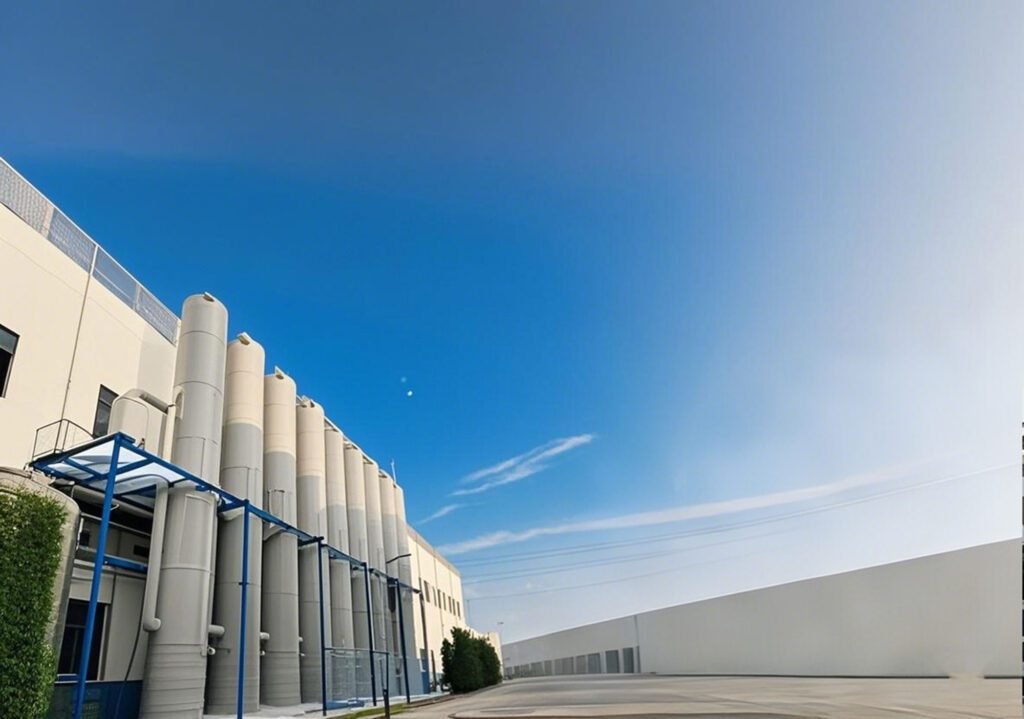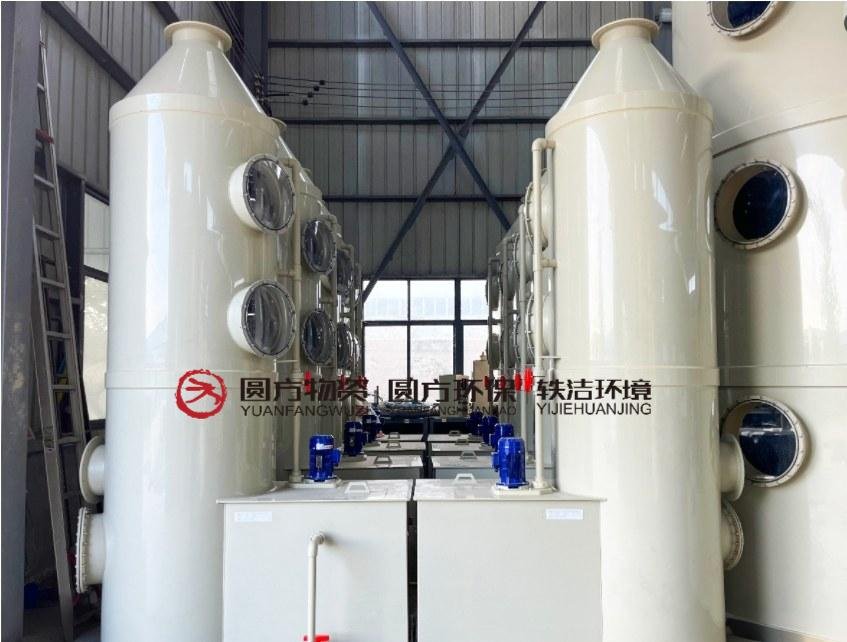Treatment Methods for Ammonia-Containing Waste Gas: Efficient Solutions to Help Enterprises Achieve Environmental Upgrades
In industries such as chemicals, pharmaceuticals, food processing, and animal husbandry, the emission of ammonia-containing waste gas has become an increasingly prominent issue, posing a key constraint to the sustainable development of enterprises. Ammonia not only has a strong pungent odor that threatens human health but may also cause environmental problems such as acid rain. Faced with stringent environmental regulations, how to efficiently and economically treat ammonia-containing waste gas has become an urgent problem for enterprises to solve. This article will introduce several advanced treatment methods for ammonia-containing waste gas to help enterprises achieve environmental upgrades.
1. Absorption Method: Efficient Recovery, Turning Waste into Treasure
The absorption method is one of the commonly used techniques for treating ammonia-containing waste gas. It leverages the high solubility of ammonia in water. Through equipment such as spray towers, a dilute acid solution (such as dilute sulfuric acid or hydrochloric acid) is used as the absorbent to react with ammonia in a neutralization process, forming ammonium salts. This method not only effectively removes ammonia but also recycles the ammonium salts as fertilizers or other chemical raw materials for reuse, achieving the recycling of resources. For example, a large ammonia synthesis plant adopted a combined process of “spray absorption + biological ammonia removal” to treat ammonia waste gas. The waste gas first passes through a spray tower where it is absorbed by dilute sulfuric acid to remove most of the ammonia. The remaining ammonia then enters a biofilter, where microorganisms convert ammonia nitrogen into nitrate nitrogen, which is finally released as harmless nitrogen gas.
2. Activated Carbon Adsorption Method: Flexible, Efficient, and Widely Applicable
For ammonia waste gas with high concentrations, the activated carbon adsorption method is a flexible and efficient treatment option. Activated carbon, with its abundant microporous structure, can efficiently adsorb ammonia molecules. When the activated carbon becomes saturated, it can be regenerated by heating or depressurization to desorb and recover the ammonia for reuse. This method is suitable for scenarios with significant fluctuations in ammonia concentration and features simple equipment and easy operation. However, it should be noted that the service life of activated carbon is limited, and it needs to be replaced regularly.
3. Biological Treatment Method: Environmentally Friendly and Cost-Effective
The biological treatment method utilizes specific microorganisms in biofilters or activated sludge processes to convert ammonia into harmless substances, making it suitable for the treatment of ammonia waste gas with continuous low-concentration emissions. This method boasts low energy consumption, minimal waste residue, and environmental friendliness. For instance, the biofiltration method employs microorganisms in fillers such as compost to oxidize ammonia into harmless substances like nitrate. The bio-trickling filter method combines the advantages of biofiltration and bio-trickling filter technologies to design a new type of biological deodorization reactor, achieving high removal efficiency for ammonia.
4. Catalytic Oxidation Method: Highly Efficient and Thorough, Suitable for High Concentrations
The catalytic oxidation method oxidizes ammonia into nitrogen and water under the action of a catalyst, making it suitable for treating high-concentration ammonia waste gas. This method features high treatment efficiency and can thoroughly eliminate ammonia pollution, but it requires periodic replacement of the catalyst and has relatively high treatment costs. However, for waste gas sources with high ammonia concentrations, catalytic oxidation is a highly efficient and reliable choice.
5. Integrated Treatment Method: Complementary Advantages, Enhancing Efficiency
In practical applications, a single treatment method is often insufficient to meet all requirements. Therefore, the integrated treatment method has emerged. By combining multiple methods such as absorption, adsorption, and biological treatment, the respective advantages of each method can be fully utilized to improve treatment efficiency and reduce operating costs. For example, ammonia can be initially removed through physical adsorption, further treated through chemical absorption, and finally deeply purified using biological treatment to ensure that the waste gas meets discharge standards.
6. Innovative Technologies: Leading the Future, Aiding Environmental Protection
With the continuous development of environmental protection technologies, some innovative technologies have gradually been applied in the field of ammonia-containing waste gas treatment. For instance, integrating absorption and catalytic decomposition methods into a coupled process system can form a complete technological process. This system not only enables the recovery of relatively high-concentration ammonia in waste gas through the absorption method but also processes the residual low-concentration ammonia in the purified gas into N2 and water through catalytic decomposition. This integrated technology not only improves treatment efficiency but also maximizes resource utilization.
Conclusion
Faced with increasingly stringent environmental regulations, enterprises need to actively seek efficient and economical treatment methods for ammonia-containing waste gas. Various methods such as absorption, activated carbon adsorption, biological treatment, catalytic oxidation, and integrated treatment each have their advantages and disadvantages. Enterprises can choose appropriate treatment solutions based on their actual situations. Meanwhile, paying attention to the development trends of innovative technologies and actively introducing new technologies and processes will help enterprises achieve environmental upgrades and promote sustainable development. Let us work together to contribute to safeguarding blue skies and white clouds!



